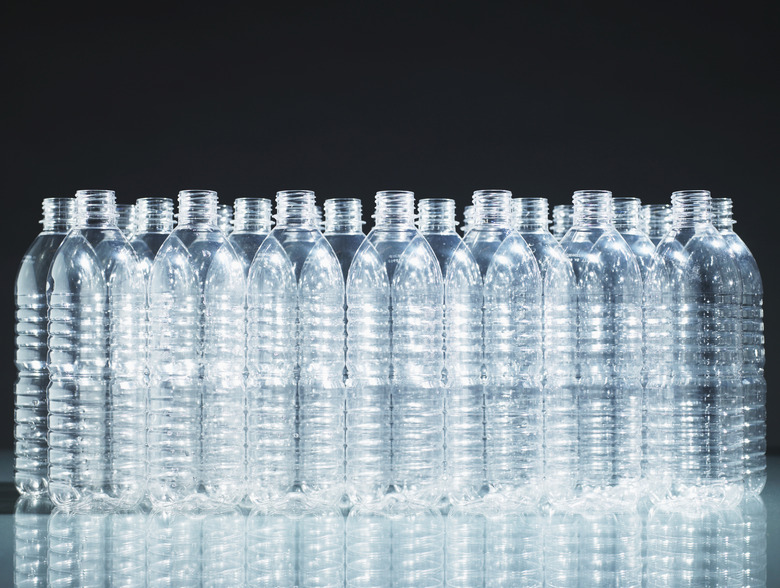Example Of A Chemical Compound Used To Make Plastic
Plastics are some of the most pervasive and useful materials in modern life. An incredible variety of plastics exist, but all are polymers of small hydrocarbons, or molecules made of carbon and hydrogen. The largest volume plastic in the United States and in the world is polyethylene.
Polyethylene
Polyethylene
Ethylene is a simple molecule composed of two double-bonded carbon atoms and four hydrogen atoms. At room temperature it is a gas. Ethylene molecules can be chemically bonded, end-to-end, to form a chain or polymer called polyethylene. Depending on how many monomers of ethylene are joined, the polyethylene will be low, medium, or high molecular weight. The size of the polyethylene polymer determines its physical characteristics and the type of products in which it can be used.
Types of Polyethylene
Types of Polyethylene
Polyethylene was first used to insulate electrical cabling during World War II. Today its uses are varied, and include everything from plastic shopping bags to toys, containers, gasoline tanks and coatings. The molecular weight of polyethylene determines the products for which it can be used. Low molecular-weight polyethylenes are liquids that are used as lubricants. Medium molecular-weight polyethylenes are waxy. High molecular-weight polyethylenes are malleable solids that can be very hard and strong.
Raw Material for Polyethylene
Raw Material for Polyethylene
Like virtually all plastics, the most common raw source for polyethylene is crude oil. When heated under the right conditions crude oil will release ethylene as a gas, which is recovered and stored. Under proper industrial conditions, ethylene molecules react with each other to form polyethylene. At first polyethylene is a warm, viscous pulp, and before it solidifies it is pushed through small holes and cut with a rotating knife so that it forms solid pellets about the size of moderately large hail. This material is then sent to other factories for melting and extrusion into molds to form other products.
Recycling Polyethylene
Recycling Polyethylene
Polyethylene is very suitable for recycling and therefore can be environmentally friendly. A thermoplastic material, it can be melted an unlimited amount of times and reshaped into different products. The most common household form of polyethylene is HDPE, or high density polyethylene, and it is used for food and household product containers. It is completely recyclable, and most U.S. households have access to plastics recycling programs. Alternatively, polyethylene can be burned for fuel, so it is possible to keep polyethylene out of landfills altogether.
Cite This Article
MLA
Updegraff, Emily. "Example Of A Chemical Compound Used To Make Plastic" sciencing.com, https://www.sciencing.com/example-chemical-compound-used-make-plastic-11337/. 24 April 2017.
APA
Updegraff, Emily. (2017, April 24). Example Of A Chemical Compound Used To Make Plastic. sciencing.com. Retrieved from https://www.sciencing.com/example-chemical-compound-used-make-plastic-11337/
Chicago
Updegraff, Emily. Example Of A Chemical Compound Used To Make Plastic last modified August 30, 2022. https://www.sciencing.com/example-chemical-compound-used-make-plastic-11337/
